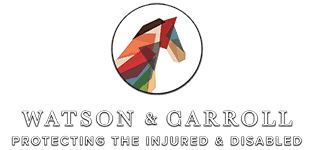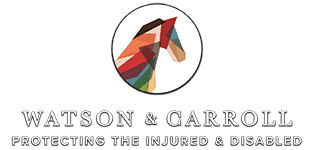Lessons Learned: Expert Qualifications in Medical Malpractice Cases
Best Practices following the Larrison v. Schubert Nebraska Court of Appeals Ruling
By John F. Carroll, JD, RN
Case citation: 2024 Neb. App. LEXIS 725 (2024) Ruling date: 12/17/2024
Medical malpractice cases are often won or lost based on the testimony of experts. These cases require attorneys to prove two distinct elements: a breach of the standard of care (SOC) and causation, that the breach caused harm to the patient. While both elements are crucial, courts have strict rules about how experts testify, especially when it comes to causation experts and their reliance on SOC opinions.
At Watson & Carroll, we’ve represented clients in complex medical malpractice cases and understand the nuances of using expert testimony effectively. One challenge that often arises is ensuring causation experts provide admissible and compelling opinions without improperly commenting on the SOC. In this blog post, we’ll share best practices to avoid pitfalls when working with SOC and causation experts.
-
Separate Breach from Causation
To succeed in a medical malpractice case, you must clearly distinguish the roles of your experts:
-
- Standard of Care (SOC) Breach: This is addressed by an expert in the defendant’s specialty (e.g., a radiologist in a radiology case). This expert establishes how the defendant deviated from what a competent provider in the same specialty and locality would have done.
- Causation: This testimony addresses how the breach (if proven) caused harm to the patient. Causation experts must frame their opinions as hypothetical, assuming that the breach occurred, rather than opining on whether the breach actually happened.
-
Frame Causation Opinions Hypothetically
Causation experts that have not been disclosed as SOC experts must not give an opinion on whether the SOC was breached. Instead, they should explain what would have happened if the breach had not occurred. This ensures their testimony remains within the bounds of causation. In a case involving blood in the spinal column causing compression on the spinal cord leading to paralysis, the following question and answer is an example of how to provide a causation opinion that survives a defense challenge:
Attorney: “Doctor, I’m not asking you to comment on whether Dr. S breached the standard of care. Assume for the purposes of this question that Dr. S identified and reported the hematoma in the spinal column (blood). If that had occurred, what would have been the likely outcome for Mr. L?”
Expert: “If the hematoma had been identified earlier, surgery could have been performed sooner, significantly reducing or even preventing the patient’s paralysis.”
This approach avoids improper commentary on the SOC breach while focusing the expert’s testimony on the link between earlier diagnosis of blood in the spinal column and the patient’s subsequent injuries.
-
Use the SOC Expert as the Foundation
The SOC expert’s testimony must lay the foundation by clearly establishing the breach. Only after this is done should the causation expert testify to explain how the breach impacted the patient. This sequence avoids redundancy and maintains clarity for the jury.
Courtroom Flow:
Standard of Care Expert Testifies First:
Example: “Dr. S deviated from the standard of care by failing to identify and report the hematoma (blood) that was visible in the spinal column on the CT scan.”
Causation Expert Testifies Second:
Example: “If the hematoma had been reported, the surgery would have occurred sooner, preventing the complications.”
-
Prepare Experts to Stay in Their Lane
Ensure your causation expert understands their role and avoids commenting on the SOC. Here’s how:
Clearly Define Their Role: The causation expert should state that they assume the breach occurred, based on the SOC expert’s testimony.
Focus on the Causal Link: Their testimony should address how the breach (if proven) led to harm.
Avoid Overstepping: They should avoid phrases like “I think the defendant should have done X.” Instead, they can say, “Assuming X was done, the injury could have been avoided.”
-
Avoid Asking the Causation Expert if They Agree with the SOC Expert
While it may seem logical to ask the causation expert if they agree with the SOC expert, doing so can create unnecessary risks:
Blurring Roles: The causation expert’s role is to assume the breach, not validate or critique the SOC expert’s conclusions.
Opening the Door: Such questions invite the defense to exploit inconsistencies or argue that the causation expert is improperly opining on the SOC.
Instead, frame the causation expert’s reliance on the SOC expert’s conclusions as a hypothetical:
Better Question: “Have you reviewed Dr. Jones’s opinions regarding the standard of care?”
Better Answer: “Yes, I reviewed and assumed Dr. Jones’s conclusions for my analysis of causation.”
Experts can rely on hearsay when forming their opinions under Rule 703 of the Federal Rules of Evidence and its state equivalents, including Nebraska’s Neb. Rev. Stat. § 27-703, IRE 5.703 in Iowa, and SDCL § 19-19-703, South Dakota. This rule allows experts to base their opinions on facts or data that are not admissible in evidence if those facts or data are of the type reasonably relied upon by experts in the particular field.
For example, an orthopedic causation expert may rely on a radiologist SOC expert’s deposition testimony about a missed hematoma on a CT scan because orthopedic medical professionals routinely incorporate radiological findings into their analysis of outcomes.
-
File Pretrial Motions to Clarify Testimony Scope
If you anticipate challenges to your experts’ testimony, consider filing a motion in limine to establish their permissible boundaries:
Breach: Addressed solely by the SOC expert.
Causation: The causation expert assumes the breach for purposes of their opinion.
Sample Argument: “The causation expert’s testimony does not address whether the standard of care was breached. Instead, it assumes the breach occurred as a hypothetical and focuses solely on the injury’s preventability.”
-
-
Build Redundancy in Expert Testimony
-
Relying on a single expert for SOC or causation is risky. Retain multiple qualified experts to:
Establish the SOC (e.g., two radiologists).
Support causation (e.g., orthopedist spine surgeon, emergency department physician).
This redundancy ensures the case remains strong even if one expert’s testimony is excluded.
-
Align Causation Experts with SOC Experts
Causation experts should review the SOC expert’s credentials and opinions to ensure consistency and alignment. This does not mean validating or critiquing the SOC expert but being familiar enough to base their causation analysis on those findings.
-
If the Plaintiff Attorney Wants Physicians to Cross Specialties
The key is to ensure the expert is properly prepared to demonstrate that they are qualified to testify about the standard of care (SOC) in the defendant’s specialty. This requires focusing on the expert’s education, training, and experience and ensuring they articulate their familiarity with the relevant standard of care in the defendant’s locality or a similar community.
In Larrison v. Schubert, the experts may have been able to provide SOC opinions, if they had done the following:
-
-
Lay the Proper Foundation for Cross-Specialty Testimony
For the two experts to offer standard of care opinions in radiology (despite being an orthopedic surgeon and emergency medicine physician), the attorney must demonstrate they meet the threshold for qualifications under Nebraska law:
Nebraska’s Expert Requirements for SOC Testimony:
Neb. Rev. Stat. § 44-2810 (Nebraska Hospital-Medical Liability Act) requires that the expert: Is familiar with the ordinary and reasonable care, skill, and knowledge ordinarily possessed and used under similar circumstances by members of the defendant’s profession in a similar locality.
What This Means for Cross-Specialty Experts:
- Familiarity with the defendant’s specialty (e.g., radiology).
- Understanding of the standard of care in the relevant locality (or a similar one).
- Relevant training or experience that overlaps with the defendant’s specialty, showing they can competently opine on the issue.
-
Prepare the Expert to Frame Their Qualifications
In depositions, the expert must emphasize their relevant experience with the defendant’s specialty. For the orthopedic surgeon and the ED physician, the goal would have been to highlight their regular use and interpretation of CT scans in clinical practice.
Deposition Prep Example Questions:
Q1: Doctor, how often do you review and interpret CT scans in your practice?
A: As an emergency medicine physician/orthopedic surgeon, I routinely review CT scans as part of my diagnostic process. This includes identifying spinal abnormalities, such as blood in the spinal canal, which is within my expertise.
Q2: Have you had formal training in reading CT scans, or do you rely on radiologists for interpretation?
A: In my residency and subsequent practice, I received training in reading and interpreting CT scans. While I consult with radiologists, I am independently able to identify major abnormalities like blood in the spinal canal.
Q3: How does your experience equip you to understand the responsibilities of a radiologist when interpreting a CT scan?
A: I understand that a radiologist is responsible for identifying and reporting abnormalities visible on a scan. My training and experience have required me to detect and respond to such abnormalities in critical situations.
-
Prepare the Expert to Frame Their Qualifications
In depositions, the expert must emphasize their relevant experience with the defendant’s specialty. For the orthopedic surgeon and the ED physician, the goal would have been to highlight their regular use and interpretation of CT scans in clinical practice.
Deposition Prep Example Questions:
Q1: Doctor, how often do you review and interpret CT scans in your practice?
A: As an emergency medicine physician/orthopedic surgeon, I routinely review CT scans as part of my diagnostic process. This includes identifying spinal abnormalities, such as blood in the spinal canal, which is within my expertise.
Q2: Have you had formal training in reading CT scans, or do you rely on radiologists for interpretation?
A: In my residency and subsequent practice, I received training in reading and interpreting CT scans. While I consult with radiologists, I am independently able to identify major abnormalities like blood in the spinal canal.
Q3: How does your experience equip you to understand the responsibilities of a radiologist when interpreting a CT scan?
A: I understand that a radiologist is responsible for identifying and reporting abnormalities visible on a scan. My training and experience have required me to detect and respond to such abnormalities in critical situations.
-
Focus on “Overlap” in Expertise
The court excluded the orthopedic and emergency room physicians’ SOC testimony largely because they stated they were “not radiologists” and could not opine on radiologists’ standards. This should have been reframed as follows:
Key Argument for Cross-Specialty Testimony:
Overlap in Practice: Although Davis and Pancioli are not board-certified radiologists, their day-to-day practice overlaps significantly with radiology, especially in interpreting CT scans for critical diagnoses.
Familiarity with Radiology Standards: They rely on the same principles that radiologists use in identifying abnormalities, such as hematomas, and understand what a reasonable radiologist should detect.
-
Demonstrate Familiarity with Local or Similar Standards
Experts crossing specialties must demonstrate familiarity with the standard of care in the relevant locality (e.g., Omaha, Nebraska) or a similar community.
How to Establish Familiarity:
Highlight geographic and professional similarities:
Example: “I have worked in emergency departments and trauma settings in hospitals similar to those in Omaha, Nebraska, and am familiar with the standard of care applied by radiologists in such settings.”
Reference national standards if local ones are unclear:
Example: “Radiologists across the country are trained to identify and report abnormalities on CT scans, and that standard applies here.”
-
Reframe Testimony to Avoid “Magic Words” Issues
The deposition statements where both Davis and Pancioli disclaimed their ability to opine on the radiology standard of care were fatal to their testimony. This could have been avoided by reframing their language.
What They Should Have Said:
Reframe Qualifications: “I am not a board-certified radiologist, but I am trained to interpret CT scans and am familiar with the standard of care that applies to radiologists interpreting spinal CT scans.”
Avoid Disclaimers: Instead of saying, “I can’t opine on the standard of care for radiologists,” they could have said: “I can opine on what a reasonable radiologist should detect based on my training and experience interpreting CT scans and working closely with radiologists.”
-
File a Pretrial Motion to Establish Qualifications
Before depositions or trial, file a motion to preemptively address and defend the expert’s qualifications. This would allow the court to consider their training, experience, and familiarity with radiology standards.
Motion Argument:
Emphasize that the expert:
- Has substantial experience reviewing and interpreting CT scans.
- Is familiar with radiology standards relevant to identifying abnormalities like spinal hematomas.
- Relies on these same principles in their practice to ensure patient safety.
-
Argue that any objections go to the weight, not the admissibility, of the testimony.
Conclusion
Using SOC and causation experts effectively require careful planning, clear boundaries, and coordination with SOC experts. By following these best practices, you can strengthen your case and avoid common pitfalls in medical malpractice litigation. At Watson & Carroll, we’re committed to providing clients with the highest level of representation, ensuring every expert plays their role effectively.
Need help navigating expert testimony in your malpractice case? Please contact us today to get your case started at (402) 991-2100. We can discuss what steps you will need to do to protect your rights and build a winning case.


